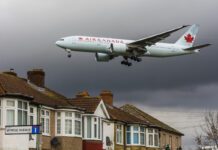
Noise can have a significant impact on health, beyond just being annoying or disturbing sleep, according to results reported in June from a study by the UK Health Security Agency (UKHSA). It looked at traffic noise, in a bid to better understand how it affects health.
This study is seemingly the first detailed assessment of its kind, assessing the health impact of transport noise in every local authority in England. It builds on long-established evidence that living in an area with higher noise levels from traffic can lead to stress and sleep disturbance, and more recent research shows that this can lead to an increase in an individuals’ risk of developing more serious health problems such as heart disease or diabetes. In 2018, the World Health Organization also published noise guidelines to highlight these issues.
Measuring the disease burden
To measure the impact of noise on health, the researchers used a standard internationally recognised metric called Disability Adjusted Life Years (DALYs). One DALY represents the loss of one year of good health.
The team’s findings show that in 2018, around 100,000 DALYs were lost in England due to road traffic noise. A further 13,000 were lost from railway noise and 17,000 from aircraft noise. Most of these losses were due to chronic annoyance and sleep disturbance, followed by stroke, ischemic heart disease and diabetes.
In studies like this, “noise annoyance” has a specific meaning: it refers to people who are very bothered or disturbed by noise over a long period of time. This can have a direct impact on their wellbeing and quality of life. It can also increase the risk of developing serious health problems like depression, anxiety, and heart disease.
The impact of noise on health varied across regions and local authority districts: these disparities can be attributed to variations in noise levels, population density and local disease burden, said the authors.
For example, London, the Southeast and Northwest regions had the highest number of DALYs lost from road-traffic noise. London also had the most DALYs attributable to aircraft noise. It’s important to note that these estimates may be conservative because the study only included roads with high traffic volumes and excluded people exposed to lower levels of traffic noise.
The study found that 40% of all adults in England were exposed to long-term averaged road-traffic noise levels exceeding 50 decibels (dB), but the percentages varied across different areas. Health effects are more likely to be detected if people are exposed to noise levels exceeding 50 dB Lden, which is around the level of noise seen on a quiet street. Around 5% of the population in England experienced aircraft noise above 50 dB, with higher concentrations in and around London. Approximately 5% were exposed to railway noise exceeding 50 dB, with less variations across local authorities than for road and aircraft noise.
As this is the first assessment of its kind in England, the study can be considered as a baseline on which future studies will be built. Comparing trends over the years both within England and between countries is difficult due to different approaches to noise measurement methods.
The results point to the need to consider noise in the decision-making process for new transport infrastructure and urban planning.
[side panel – Noise camera ]
Trials of a road camera designed to identify and track drivers who break the law by revving engines and using modified exhausts began in a small number of locations in October 2022, as part of a trial to clampdown on antisocial driving.
Bradford, South Gloucestershire, Great Yarmouth and Birmingham were chosen to host the new ‘noise camera’ following a government-backed competition to tackle noise pollution.
The technology uses a video camera in conjunction with a number of microphones to accurately pinpoint excessively noisy vehicles as they pass by. This means that if drivers break the law by revving their engines unnecessarily or using illegal exhausts, they will be automatically detected. The camera takes a picture of the vehicle and records the noise level to create a digital package of evidence which can be used by local police to fine drivers.
Atkins-Jacobs Joint Venture is acting as a technical consultant for the trials, providing acoustics expertise, design, modelling and asset management. The noise camera is designed and developed by MicrodB.
Atkins Jacobs Joint Venture Practice Director Andrew Pearce said: “We are fully expecting the trial in these four chosen locations to confirm what we have seen in testing, which is a highly targeted use of technology to ensure only those motorists making excessive noise will be subject to enforcement.”






